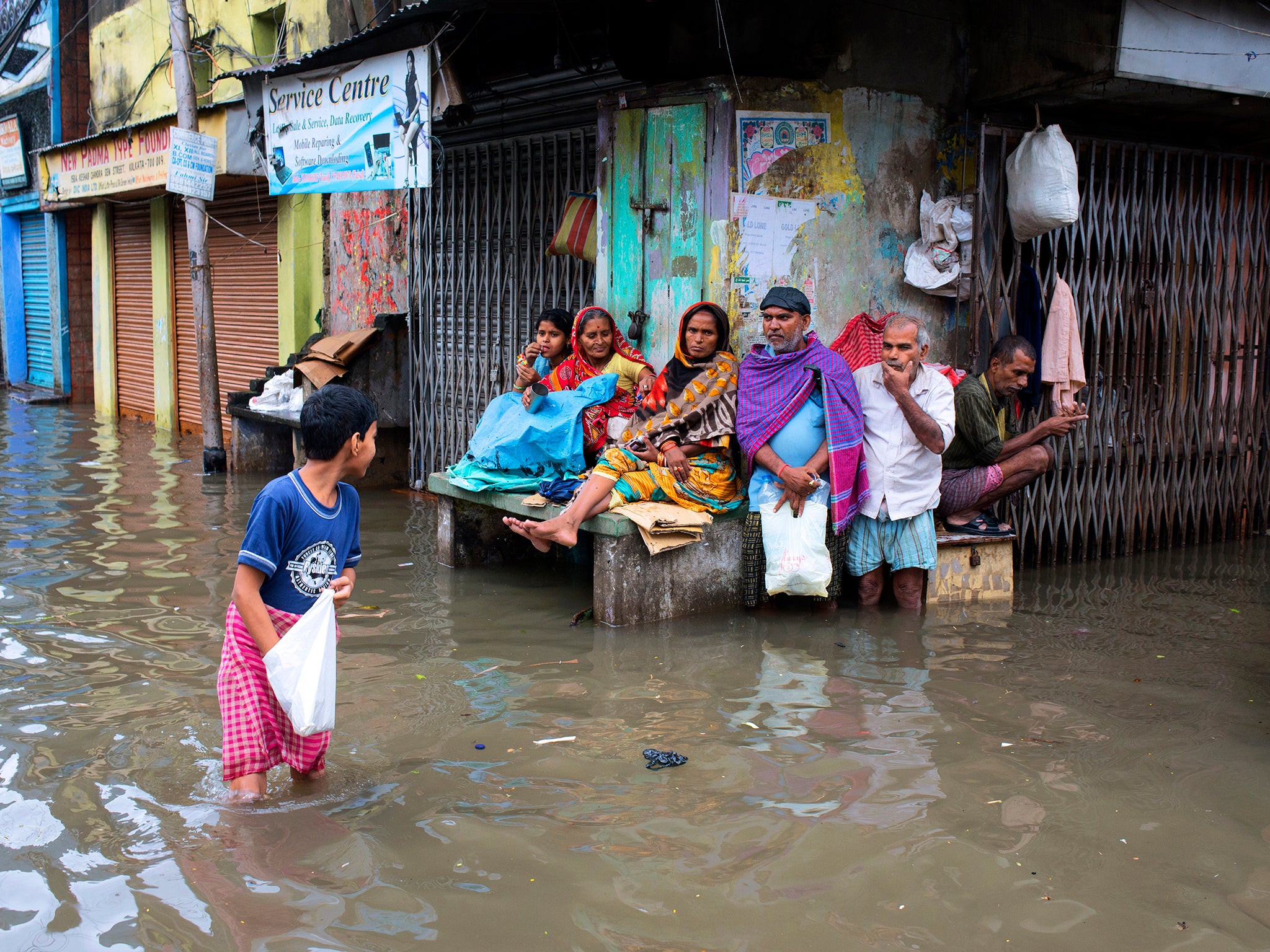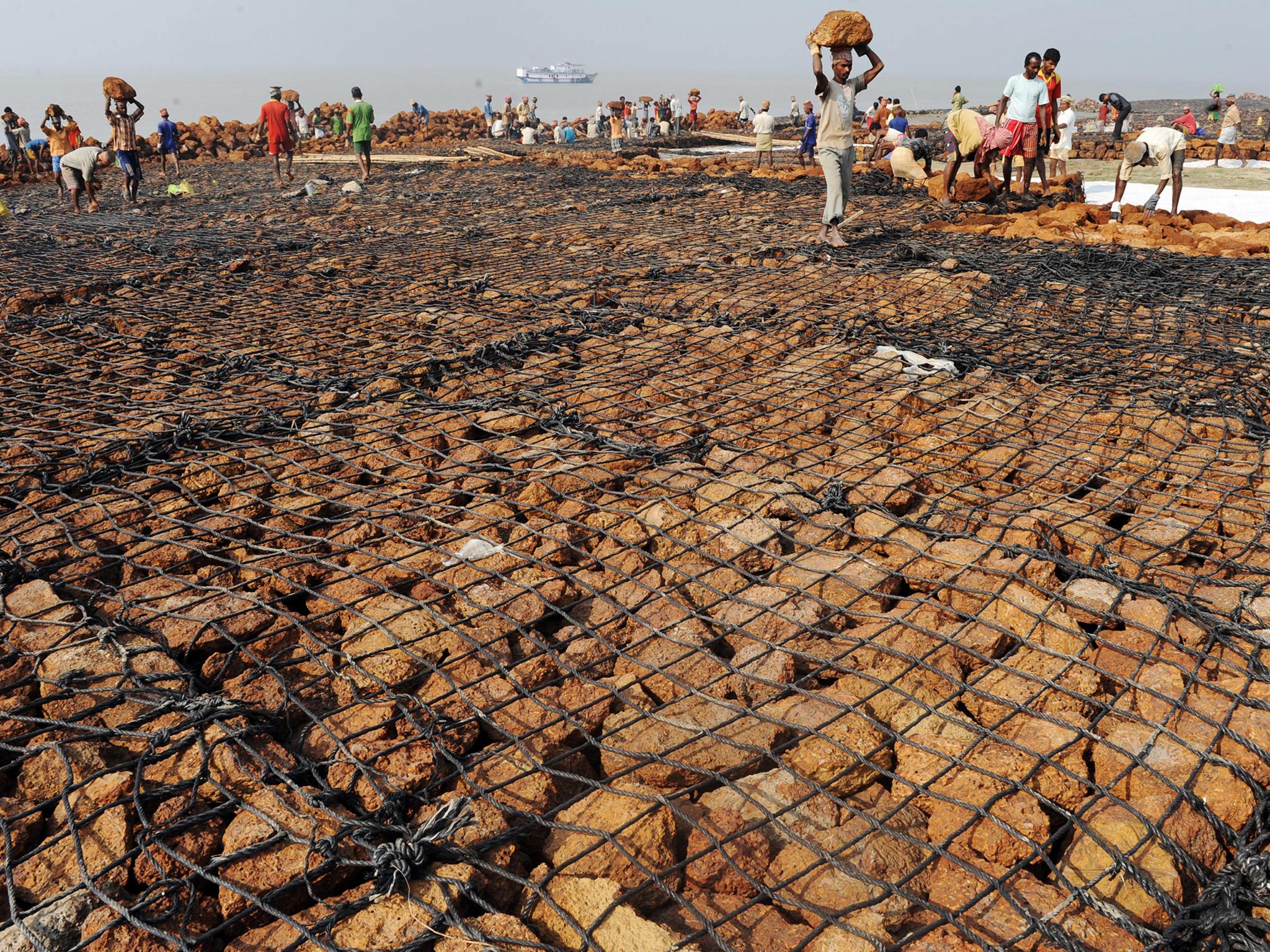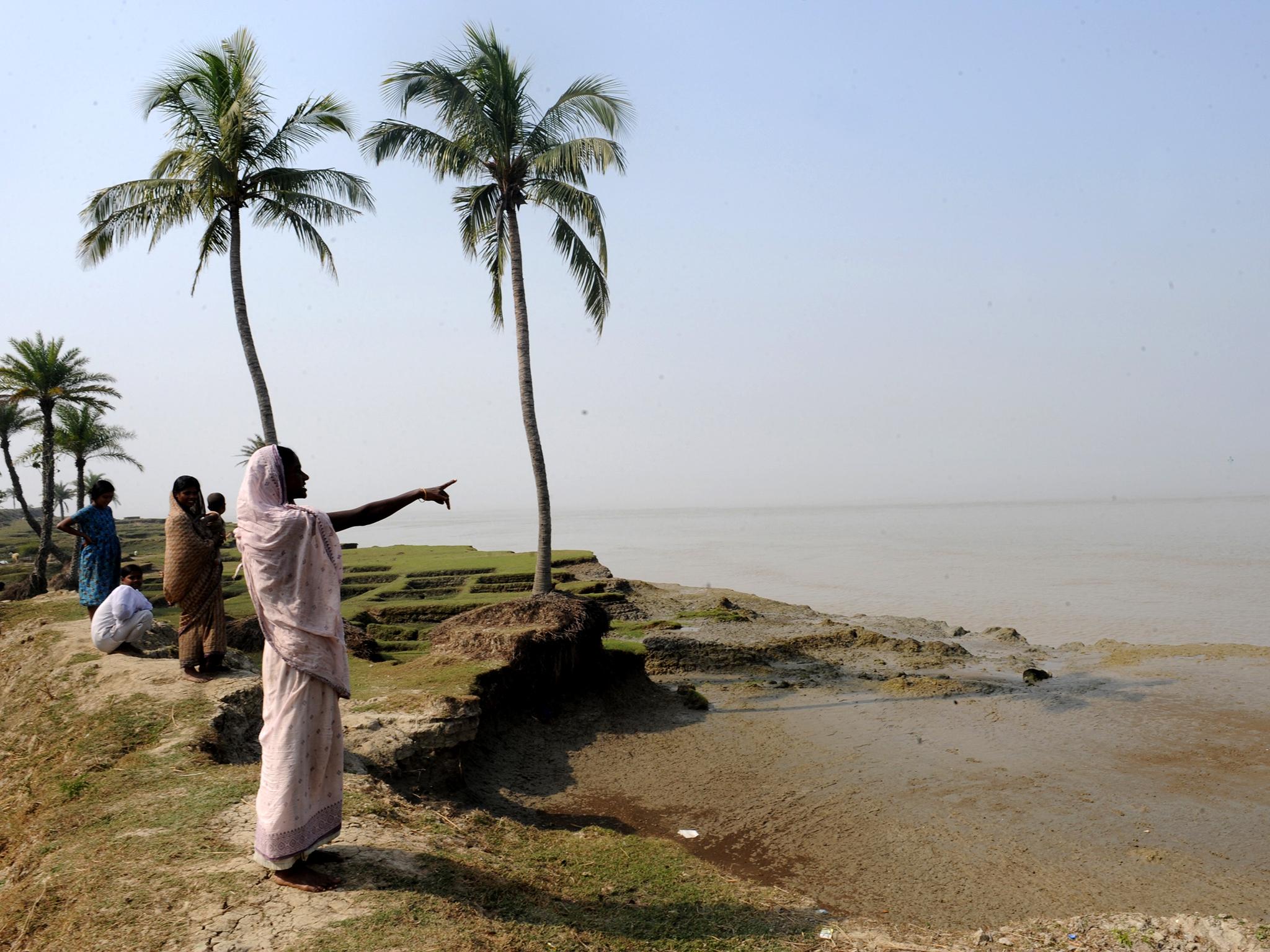Kolkata is becoming an unnecessary climate casualty – it didn’t have to be
Global warming poses an urgent threat to the river delta city of 14 million. A reporter returns home and learns: the city’s natural defences are being lost

Your support helps us to tell the story
From reproductive rights to climate change to Big Tech, The Independent is on the ground when the story is developing. Whether it's investigating the financials of Elon Musk's pro-Trump PAC or producing our latest documentary, 'The A Word', which shines a light on the American women fighting for reproductive rights, we know how important it is to parse out the facts from the messaging.
At such a critical moment in US history, we need reporters on the ground. Your donation allows us to keep sending journalists to speak to both sides of the story.
The Independent is trusted by Americans across the entire political spectrum. And unlike many other quality news outlets, we choose not to lock Americans out of our reporting and analysis with paywalls. We believe quality journalism should be available to everyone, paid for by those who can afford it.
Your support makes all the difference.I wanted to glimpse the future in the city where I was born. So, this summer I returned to India for a firsthand look at the way climate change is affecting Kolkata.
I spent the first seven years of my life in this delta city, close to where the Ganges pours into the sea. In my memory, it was a city of steam and sweat, rice and fish, of languid, muggy afternoons. A city of water. Lots and lots of water.
On this trip, in the era of global warming, I found a city at profound risk.
Kolkata, formerly known as Calcutta, now faces more intense and more frequent storms, cyclones, river tides and floods.
Plus, its hot, muggy days are getting hotter and muggier: in mid-June, when I was there, the heat index, a measure of temperature and humidity, peaked at 45C, or 113F. In Gariahat market, where I once watched my mother unfurl sari after sari, one street vendor leaned wearily against a wall, dabbing his head with a handkerchief in vain.
Most worrying, this sprawling metropolis of 14 million is utterly unprepared.
“On one side your threat is increasing and you are basically in a prehistoric level of preparedness,” Jayanta Basu, an environmental journalist and a Kolkata native, says of his city. “All in all, you’re in for a disaster.”

More upsetting to Basu, it didn’t have to be this way.
Kolkata had natural defences: the mighty Ganges to the west, wetlands to the east, all emptying into the mangrove-rich delta region known as the Sundarbans and out to the Bay of Bengal. The city’s lakes and creeks could swallow the rains. The soft clay soil, used by the city’s sculptors to create figures of revered Hindu gods, could hold groundwater.
Today, many lakes and canals are filled with muck or built over altogether. An area of low-lying fields that once absorbed the runoff is now a suburb of highrises known as New Kolkata. The rapid extraction of groundwater is causing the landscape to sink.
“We’re actually kind of destroying all these natural subsidies,” Basu says.
And the Sundarbans? The people of the Sundarbans are pouring into Kolkata.
The water of the Bay of Bengal is rising faster than the global average. Their paddy fields turned salty, they tell me, and their houses fell down. So they packed up and moved to Kolkata, the closest big city, joining the ranks of the most vulnerable: the city’s poor.
Everywhere you have an image of huge monstrous buildings looking at you from all sides of the wetland. It’s basically waiting to be sucked
Now, they live in houses made of bamboo and tin, in neighbourhoods where the drains back up in the monsoon and you have to hitch up your sari to wade through the filthy, stinking floodwaters.
Kolkata – once a city of empire, then a city of jazz, then a city synonymous with destitution – sits in a saucer, sloping down from the Ganges to the wetlands and eventually out to the Bay of Bengal, roughly 90 miles away. The Adi Ganga, a tributary of the Ganges, meanders through the city. Clogged with silt, today, it is no more than a shallow, fetid wastewater canal.
I went to a neighbourhood perched on the edge of the Adi Ganga. Inside the brick and tin houses it is blazing hot, and so the neighbourhood women sit in the narrow lanes, combing their children’s hair or washing lunch pots at the public tap.

I ask them about the rainy season. Every year, they say, especially during high tide on the river, the lanes flood. Water sloshes into their homes. The drains back up and overflow. The community tap is often contaminated. Dengue fever, once unheard-of in Kolkata, is now a common hazard.
The city is no stranger to flooding. Even after a moderate downpour, a movie theatre that Sugata Hazra favoured as a young man would fill up with water. Hazra, now an oceanographer at Jadavpur University, remembers having to lift his feet in the middle of a movie. These days, even though many drains have been cleaned, low-lying parts of the city still get inundated. Traffic grinds to a halt.
The risk of flooding has increased, as extreme rainfall events have become more common. One study found that Kolkata is receiving many more heavy rainfall days than before.
One of Hazra’s doctoral students, Amit Ghosh, drilled down further. He found that between 1955 and 2015, the city recorded three times as many cloudburst days, when it rained more than 4 inches a day, compared to the first half of the 20th century. These heavy rainfall events are disastrous for an already flood-prone city, where nearly a third of the population lives in slums, or worse, on the sidewalks under the open sky.
According to the Organisation for Economic Cooperation and Development, if the current trajectory of greenhouse gas emissions continues, by 2070 Kolkata is projected to have more people exposed to coastal flooding than any city in the world.
Among cities facing growing flood-damage losses between now and 2050, Kolkata is projected to be among the top three.
“This is what we say to God: if a storm comes, kill us and our children all at once, so no one will be left to suffer,” says Malati Mandal, a 30-year-old homeless mother of four. She lives on a sidewalk along Rashbehari Avenue, a 10 minute walk from my childhood apartment.
When the monsoon came, she would watch the sky for clues. When the clouds darkened, she would cover her bundle of sleeping mats with a plastic tarp. If it rained all night, she would gather her children close, sit under an awning and wait for it to pass.
Joyashree Roy, a Jadavpur University economist who studies the impact of climate change, says the extreme weather that she has been reading about in academic journals for years is already a fact of life in Kolkata. “Climate models are showing temperature related extremes and rainfall extremes, which we are seeing is already happening,” she says.
These days, the city seems to live in a simultaneous state of growth and decay. A new Metro line is under construction, stretching into the eastern suburbs. The roots of old trees wrap their fingers around the old unkempt houses. One afternoon, walking to a tea shop on Russell Street, in the city enter, I peer through a window to find that an abandoned courtyard has grown into a jungle.
Early on a Sunday morning, before the midday June sun can fry us alive, Basu takes me to the eastern wetlands, an internationally protected site stretching across 30,000 acres that he describes as the city’s “ecological subsidy”.
The wetlands, a patchwork of ponds woven together by slender berms, cleans the city’s wastewater. It also defends the city from catastrophic floods, carrying floodwaters to the sea. “The runoff has to go somewhere,” Basu says. “This is that somewhere.”
This is what we say to God: if a storm comes, kill us and our children all at once, so no one will be left to suffer
We drive around the perimeter of the wetlands. On one side looms a forest of office buildings. On another, a luxury condominium complex is under construction, aspirationally called Fifth Avenue. Nearby, boys rifle through an illegal hill of garbage, looking for recyclables. Through the haze, you can see the suburb known as Rajarhat. Basu notices something he hasn’t noticed before.
“Everywhere you have an image of huge monstrous buildings looking at you from all sides of the wetland,” he says. “It’s basically waiting to be sucked.”
We drive on to a canal that empties into the wetlands. Along its banks in a makeshift factory, three migrants from neighbouring Bihar state are grinding old rubber flip-flops into rubber particles for reuse. A few doors down, Gunadhar Mondol tells me he has come from the Sundarbans after his home was washed away by the salty sea.
Further along the canal, I meet Rini Giri, who says she left her village in the Sundarbans after Cyclone Aila swept through in 2009, flattening her house and turning the rice fields salty. With her husband, Bapi, and their two kids, Giri came to the city a few months later, only to have a thunderstorm send a tree crashing down on the asbestos and tin roof of their new home.
I notice the beds are raised on bricks. That’s because floodwaters come into the house every year, Rini Giri says. What she worries about most, she says, are the fierce gales that blow in from the bay. It reminds the Giris of the cyclone they fled. The cyclone that broke the embankments and left a death toll of nearly 200 in India and neighbouring Bangladesh.
This is what Basu worries about most: cyclones are becoming more intense in the Bay of Bengal. With the exception of Aila, which downed power lines and trees, the city has been largely spared. But, he says, “Kolkata is not going to be lucky forever”.
© New York Times
Join our commenting forum
Join thought-provoking conversations, follow other Independent readers and see their replies
Comments